
Concept models are a fundamental tool that helps architects and engineers visualize their vision of the design. 3D printing simplifies the process of turning a CAD model into a physical model. It is an efficient process that lets architects and engineers turn out models quickly and more accurately. It also gives buyers and clients a better idea of the look of the building. No matter how complex the geometries. We can have 3D-printed models in a few days.
3D printing is not new to us but already existed for quite a while. To date, we can now do large-scale and realistic 3D printing rather than just a scaled model. We used different materials like plastic, metal, ceramics, and even glass in our printing. Few people are aware of what 3D printing in construction is. The general idea of 3D printing in construction is to print a house by printing the walls of a building.
Several years ago, the architectural and construction industries began experimenting with 3D printing technology. In construction 3D printing, we used large printers printing individual building elements, which we assemble later on-site, but it is not limited to that; hence we can print houses on site. These printers are large and cumbersome. Some printers have a portal design but with height limits for the printed building and are difficult to transport and assemble. That is why this approach hasn't resulted in a revolution.

A 3D printer uses rubber, wax, latex, paper, gold, titanium, and other materials instead of ink to produce a solid, three-dimensional object. We have the first 3D printers back in the mid-1980s. We used computer-aided design (CAD) software to generate an object by spraying or pressing one thin layer of material at a time onto the platform. Then, we meld them into position with a precisely focused laser, which is the same on regular printers. We stacked up thin layers of the material to produce a three-dimensional object.
We encountered difficulty in printing roofs and slabs; hence it entails printing horizontal structures. We can overcome it by printing supports, which we can remove later, but it is only viable to plastics and not on concrete. Removing concrete support is a difficult task. A solution is we print floors and slabs separately and assemble them on site.
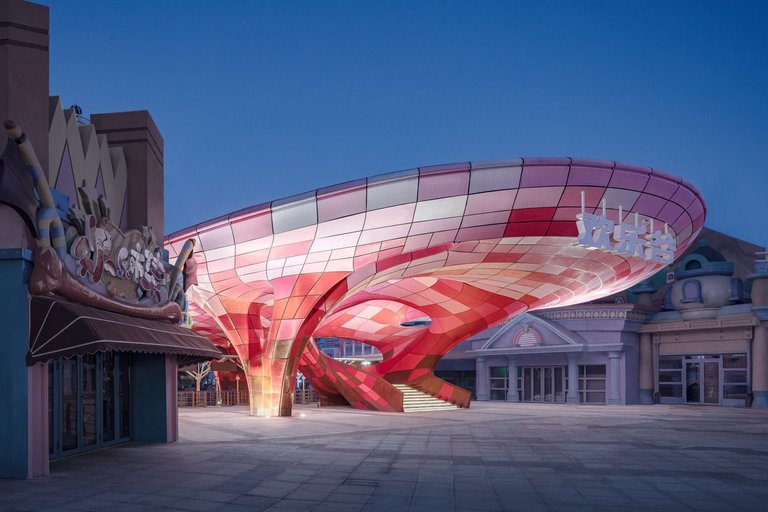
Plastic 3D Printed Pavilion, China
We can see the world's largest plastic 3D printing architecture in Nanjing Happy Valley Theme Park East Gate. It formally opened in mid-November 2020. The pavilion concept unveiled to us the influential possibility of applying 3D printing in construction. It gives us a peek at the future of architecture. The pavilion showed us what human creativity and robotic precision could bring to design and building.
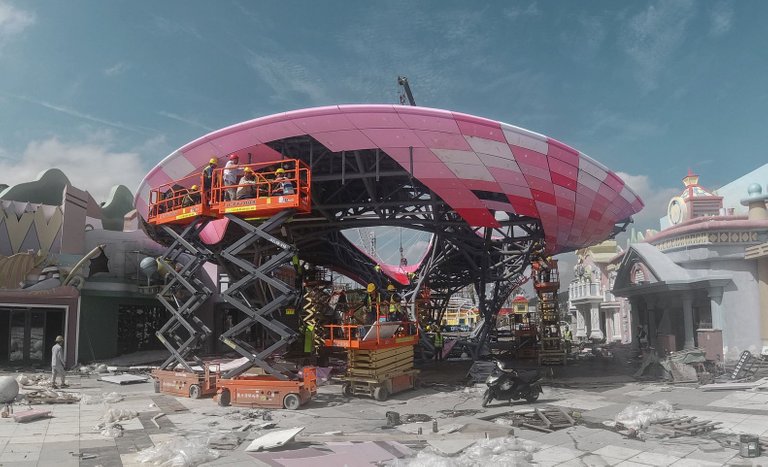
Nanjing Happy Valley's east gate stands 52 meters long, and it is 26 meters wide. It has a projection area of 1352 square meters with a surface unfolded area of 1950 square meters. It has multi-dimensional hyperbolic geometry that allows an overhang span of up to 30m, which has a heterogeneous irregular shape. It possesses an architecture and construction challenge.
The Nanjing Happy Valley has a multi-dimensional hyperbolic surface all over the place that provides flow and continuity. It has three-dimensional space that bends to strengthens the space continuity. The curved surface defines the boundary lines of the building. They coated the surfaces with GRP tiles, except for the flat roofs.
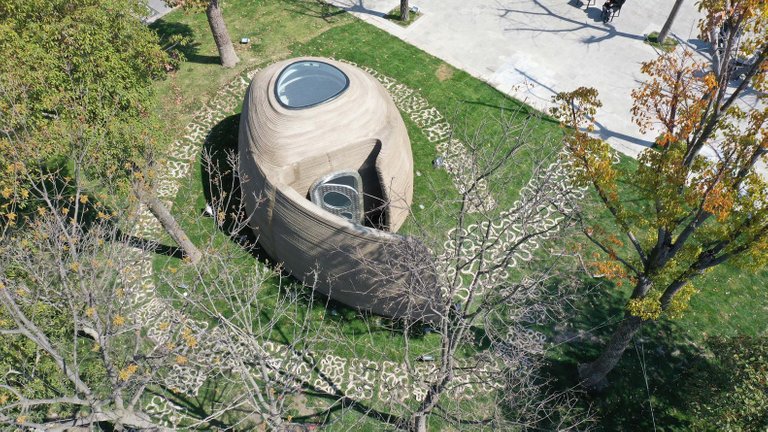
A Robot-3D Printed Concrete Book Cabin
Professor Xu Weiguo of Tsinghua University's School of Architecture designed the 3D printed Book Cabin. His team constructed the cabin with printing machines and materials (which they manufactured themselves) in Shanghai. They used the MAYA tool to design the concept drawing and object modeling. The space form and configuration rationality decide the implementation model. Then, the digital files guide the robot 3D printing equipment to build the structure layer by layer and stack printing. It results in the curved form of the Book Cabin.

The Book Lodge is about 30 square meters in size, which used fiber concrete without steel bars and no formwork. They used two sets of robotic arms to print the structure. One arm prints the building foundation while the other is pre-printing the arc walls. The cabin walls are hollow to give room for thermal insulation that to pour in. The cabin wall has laminated and woven-pattern texture, giving us a sense of being delicate.
Round Houses of Raw Earth
The collaboration between Mario Cucinella Architects and WASP, specialists in 3D Printing in Italy, resulted in a natural 3D printed construction. They used recyclable and carbon-neutral material, which is raw earth, to print the structures. They called the circular housing TECLA, which is the prototype of their collaboration. They used several coordinated 3D printers at once to operate simultaneously to achieve the structure.
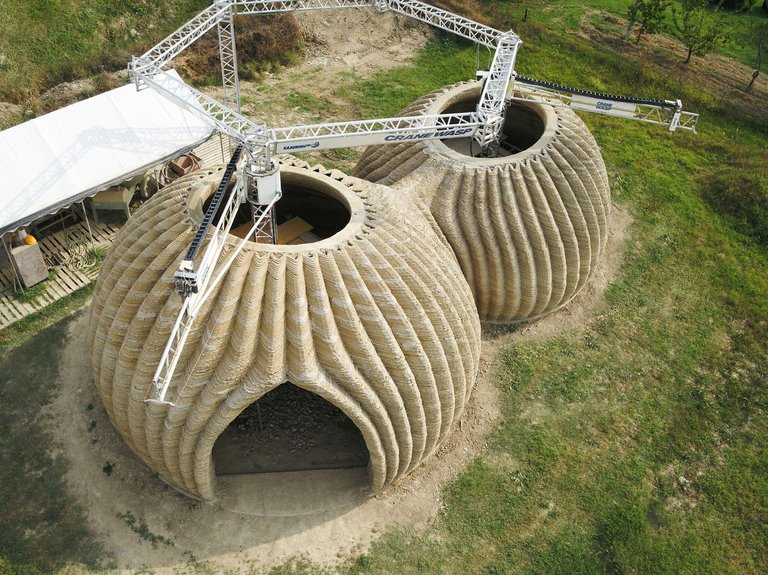
The TECLA only requires 200 printing hours to complete, with 60 cubic meters of raw earth. The design concept inspiration is the potter wasp. The house has a double dome that acts as a structure, roof, and cladding. The design simplifies the process, minimizes resources, and reduces construction time significantly. We knew that 3D printing often printing individual parts and assembled later, but with crane WASP, they can print all parts simultaneously without conflicts.
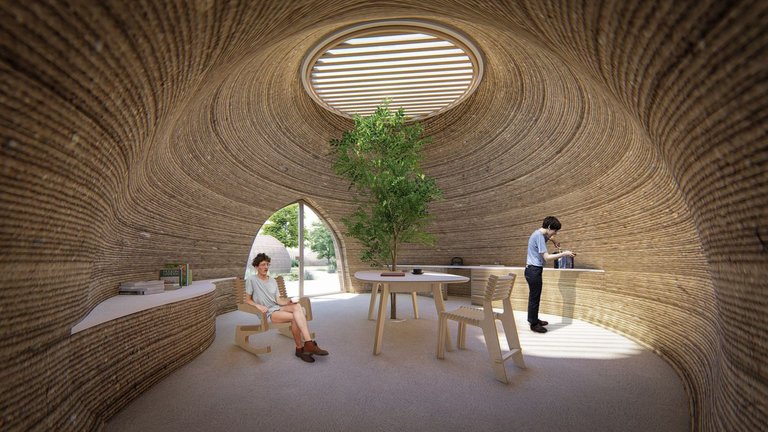
3D printing is the future of architecture and construction
I am convinced that 3D printing would replace conventional construction methods (but not sooner). The standard stone architecture with blocks and bricks is now the most endangered. We can now print with a cement and sand combination, so a printed house is no better than a concrete house. We look forward that 3D printing makes building a concrete building cheaper.
We rely heavily on human capital at different levels of traditional building, which I think time-intensive and costly. We can't deny that large construction incurred a considerable volume of building waste. On the other hand, 3D printing utilizes digital models and prints buildings from a computer-aided design (CAD) with less human intervention. Besides, 3D printing won't need tooling, formwork, and fixtures.
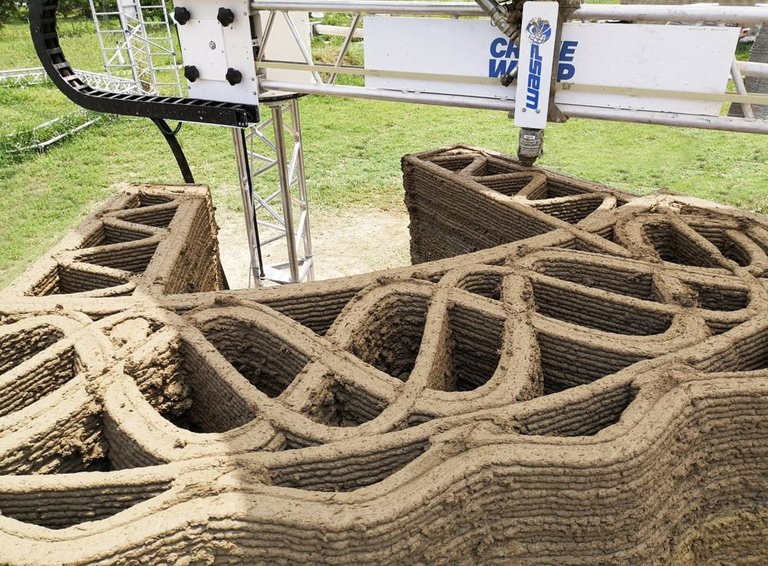
We need several formworks in our traditional construction that increase the requirement for labor, machinery, and material cost. A simple geometric formwork attributes 25% to 35% of the costs of structural work and considerable execution time. How much more if we have complex formworks in our design. Although 3D printing is not a quick construction process, it is an effective method due to virtually no waste, unlike traditional construction.
As in all technological implementation, expense and convenience are important considerations, and this is where 3D printing outperforms current technologies. 3D printing allows architects to create an intricate architectural structure that would otherwise be difficult to imagine. Architects may use 3D printed prototypes to demonstrate how structural components work well. 3D printed models provide us detailed visualizations to create realistic site plans. High-quality architectural designs using cutting-edge 3D printers clarify the details of exterior living and leisure areas, like swimming pools.
Readings
- Beyond the Geometry Plastic 3D Printed Pavilion
- Round Houses of Raw Earth: 3D Printing Sustainable Homes in 200 Hours
- A Robot-3D Printed Concrete Book Cabin
- A Review of 3D Printing in Construction and its Impact on the Labor Market
Image Credit: Schran Image, Professor Xu Weigou, and Mario Cucinella Architects and WASP
I didn't know it was out that early.
I think 3D printing will definitely be a part of the future as it will make things easier to automate. At the same time, it should reduce the costs of things closer to the material costs since the printer will do the rest. I am very interested in how the housing market will look because 3D printed houses are way cheaper to make.
We have the same though. Digging on 3D printing technology, I found out that they existed as early as 1980s, but they are not yet fully developed to what we have to date.
I think it will greatly effect the housing market. We may see cheaper housing units, but not too low.
Thanks for this comprehensive and well thought out post. 3D printing amazes me. I'm an engineer yet I haven't been able to witness this kind of technology. I want to witness it in person. Since this technology requires less human intervention, how do you think would this affect the construction workers?
In the Philippines, we don't have these technology yet. Maybe, that is why you never saw one. I only saw 3D printing technology for plastic design in a FABLAB, but in terms of full scale construction, I haven't seen one too.
With 3D printing in construction, there would be less construction worker, which may cause their livelihood but proper training will enable our worker to be adept with the technology. !PIZZA
$PIZZA@reewritesthings! I sent you a slice of on behalf of @juecoree.
Learn more about $PIZZA Token at hive.pizza
I was amazed at how 3D printing can print almost anything that you can imagine, from a handheld gun to a building. It is indeed the future of architecture and construction.
3D printing technology will revolutionize architecture, construction, and engineering. We will later see urban housing came out from this technology.
That's a thoughtful publication indeed, 3d printing might bring some revolutionary changes but on the other hand many factors like strength, durability, labour loosing job and such factors implies which may be sought by some future technological enhancement!
Good luck and have a great weekend
@tipu curate
Upvoted 👌 (Mana: 98/112) Liquid rewards.
I appreciate the support, @claudio83.
May be they are the future or a part of our future of construction.
With developing technologies we are all open to new fascinating changes. That's a great perspective about 3D printing.
Our experience with this construction software company https://intelvision.pro/industries/construction/ has been nothing short of fantastic. Their software is a powerful tool that has helped us optimize our construction processes and deliver projects on time and within budget. Their support team is responsive and knowledgeable, making it easy to resolve any issues or questions. Thanks to their software and support, we've seen significant improvements in our project efficiency and profitability.
So far, we only have simple structures and not the high-rise structures that is why there are not a lot of data and researches on how durable these structures are. With the current printed structure, they are able to sustain an functional, safe and livable space, but time would tell if they are really durable.
Thank you for engaging, @obrisgold!